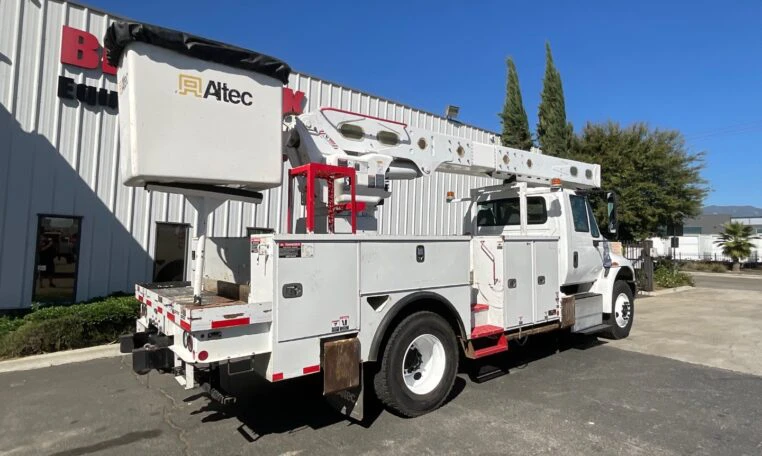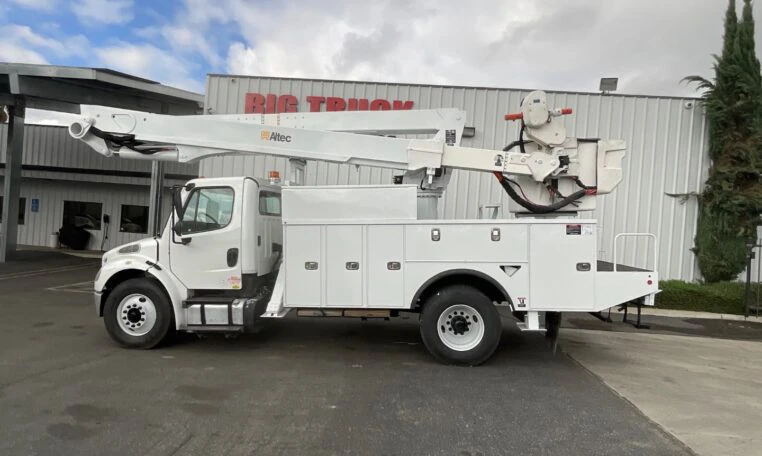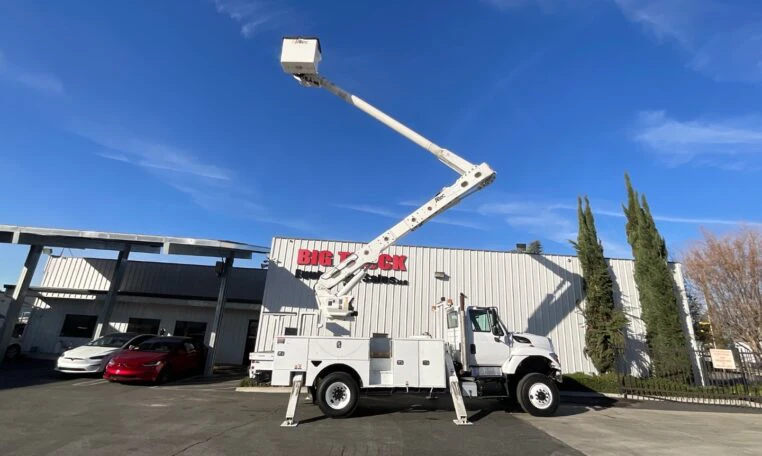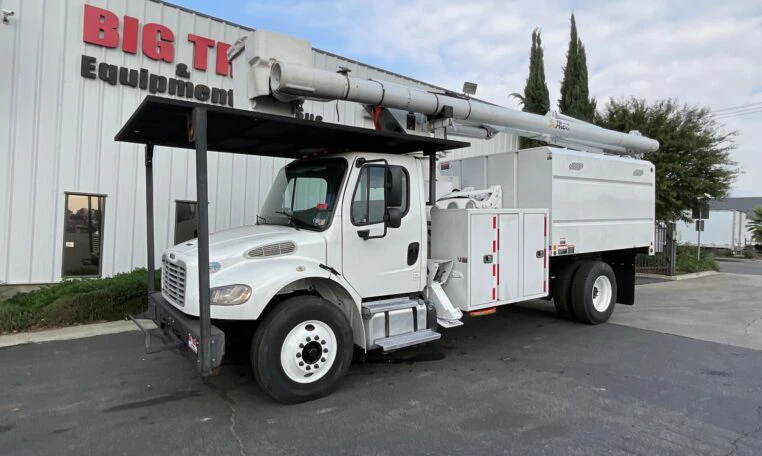
Bucket trucks are one of the most widely used heavy-duty vehicles across various industries for aerial access. Also known as aerial lifts and cherry pickers, these trucks provide an efficient and safe way to reach elevated spaces.
While these machines are handy in maintenance and construction operations, they need to be regularly maintained to keep running smoothly and with optimal functionality for a long time.
If you’re regularly using a bucket truck in your work operations and want to learn some maintenance tips, you’re at the right place!
Read on to learn more about bucket trucks and effective maintenance tips to ensure their efficacy.
Understanding Bucket Trucks

Before we explore bucket truck maintenance tips, it’s essential to understand what makes them an indispensable vehicle in different industries.
Bucket trucks are specialized vehicles that have two main components: an extendable hydraulic arm and a bucket or a platform at the end. These versatile trucks are designed to lift tools, construction workers, and other materials to elevated spaces. They are typically used in the forestry, construction, maintenance, utility, and telecommunication industries.
Many bucket truck models also come with an arm that can spin and rotate up to 360 degrees. This gives this machine a lot of maneuverability and reach, allowing it to reposition and position the work platform with the operator controls that are mounted on the bucket.
The Components of a Bucket Truck

Here are some of the main components of a bucket truck.
Hydraulic Boom
The hydraulic boom is the primary feature of a bucket truck, which consists of a series of interlocking sections that can retract and extend.
Platform or Bucket
At the end of the hydraulic boom is the bucket or the platform where the workers can stand to perform their tasks. These buckets are equipped with a range of safety features like guardrails and harness attachment points to ensure the worker’s safety.
Controls
Bucket trucks are operated from a control panel present next to the hydraulic boom. This control panel allows the operator to raise, extend, and retract the boom with precise maneuverability.
Stabilizers
Bucket trucks also come with outriggers or stabilizers that provide additional support and prevent tipping over.
Bucket Truck Maintenance Tips
Here are some maintenance tips to keep your bucket truck in top-notch condition.
Daily Inspection is Necessary
One of the most important things to remember for proper bucket truck maintenance is daily inspection. Check for signs of damage, cracks, leaks, wear and tear, loose bolts, etc. Make sure that all the alarms, lights, and safety features are working correctly. The inspection should be conducted according to the manufacturer\'s recommendations and industry standards. These inspections would help detect any potential issues right in the beginning, allowing for timely repairs and preventing costly breakdowns.
Scheduled Maintenance Tasks

Regular maintenance tasks should be scheduled from time to time to extend your bucket truck’s lifespan and keep it running smoothly. These maintenance tasks should include filter replacements, oil changes, hydraulic fluid checks, etc.
Checking the Electrical Systems
Bucket truck electrical systems control a range of functions, including operating the lift controls and powering the auxiliary equipment.
Make sure to regularly check the electrical systems to prevent any electrical breakdowns leading to extended downtime.
Electrical system inspections should include checking the switches, checking the wiring harnesses, testing battery voltage and connections, and the relays for proper operations.
Maintaining Cleanliness
Keeping your bucket truck clean and free of debris can help prevent corrosion and rusting. Consider using a soft-bristled brush and a mild detergent to clean your bucket truck’s exterior. Pay special attention to the areas surrounding the hydraulic cylinders. Once you’ve washed your trucks, remember to dry it out properly to prevent rusting from standing water.
Tire Care
Tire care for your bucket truck is important. Inspect the tires and check for cuts, wear, and punctures to prevent tire failures and blowouts. Proper tire inflation, as per the manufacturer\'s recommendation, is also critical for optimal handling and fuel efficiency.
Rotate the tires regularly to prolong their lifespan.
Are you looking to invest in high quality bucket trucks for sale in Texas? Look no further than Big Truck & Equipment Sales. As the leading supplier of used bucket trucks, digger derrick trucks, and vacuum trucks, they have an incomparable selection of used trucks that are engineered for optimal performance. Their team is present round the clock to help you find the most suitable heavy-duty vehicle for your work operations.
Contact them today to learn more about their Altec bucket trucks for sale.
About the Author
Ben J. is a seasoned expert in the field of specialized vehicles, with a special focus on vacuum trucks and bucket trucks. With over two decades of experience in the industry, the author has extensive knowledge of heavy-duty vehicle maintenance. This is why he likes to write informative blogs to help his readers understand the different aspects of vehicle maintenance.
In his free time, the author likes to spend time taking long nature walks and preparing vegan treats.

